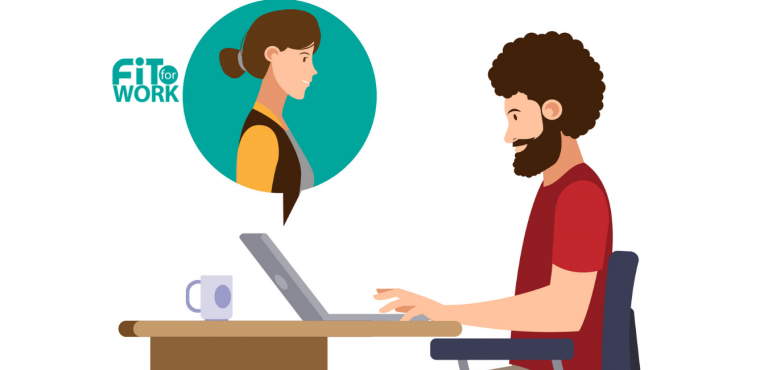Returning to The Office: What Does that Mean for Ergonomics

Estimated reading time: 3 minutes
While some companies have indicated that they will continue to work remotely as they have done in the past year, others have recently released research on the gradual return to the office once the COVID pandemic is over. Many multinationals have been letting their employees go back to the office in recent months, for two or three days a week or even fully back to the office. Returning to the office, what does that mean for ergonomic? Especially when you have to share a workplace or you need to work from a meeting room? Read this blog for more information.
Hot-desking setup
What is hot desking? Hotdesking is a workplace system where desks are used by different people at different times. The goal is to maximize the space efficiency of the office or an external workspace. This means that everyone who uses a different desk every day must set up their workplace correctly. Without a permanent set-up, workspace ergonomics can easily be forgotten. Poorly adjusted chairs and badly positioned monitors, keyboards or mouses can lead to unproductivity, pain, as well as long-term musculoskeletal damage. There is no one-size-fits-all approach to an ergonomically efficient workstation, but there are some general rules which can help with hot-desking.
1) Take your time.
Always take the time to set up your workplace correctly. With hot-desking, it is important to set up your desk every day in a way that suits you. Factors such as desk layout, monitor height, adjustable armrests, and lumbar support are important to avoid discomfort.
2) Find the right height.
If you are sitting, your feet should be flat on the floor with your knees positioned at 90 degrees at hip-distance apart. Sit right towards the back of the chair, as this makes it more difficult to slouch and gives you support for your back. Elbows should be by your side and at 90 degrees with relaxed shoulders. If you are standing, adjust your desk to a 90-degree elbow position and make sure you have equal weight at both feet. Keep your knees soft, don’t lock them out to
Own desk
Returning to the office could be mean returning to your desk. If you have your "own" desk in the office, try to set it up correctly before you start working. Adjust your screen position with the general rule that your screen should be about one arm's length away. Make sure you work from eye level a the top third of your monitor and try to keep your body alight and upright.
Meeting rooms and non-traditional working areas
In addition to the desk you use, we often use the meeting rooms or a non-traditional workspace. Also, employees often have to sit through long presentations and meetings in a conference room. Sitting for hours can cause discomfort, make sure to move every 30 minutes. When using a laptop in a conference room, place the laptop on the edge of the desk and push the screen all the way open and try to look down with your eyes. Make sure you sit all the way back in the seat and adjust your seat to the correct height. Take the time to set up the chair, laptop and any equipment you use, even in a meeting room or non-tradition working area. Returning to the office means you have to focus on your work set up wherever you work.
How can Fit for Work help?
For more information about Ergonomics Self Assessment and Education Tool or support to stay legally compliant, reach out to Fit for Work and discover how to help you develop, maintain, and support your ergonomics program. For more information on our Ergonomics Self-Assessment and Education Tool, contact us.









